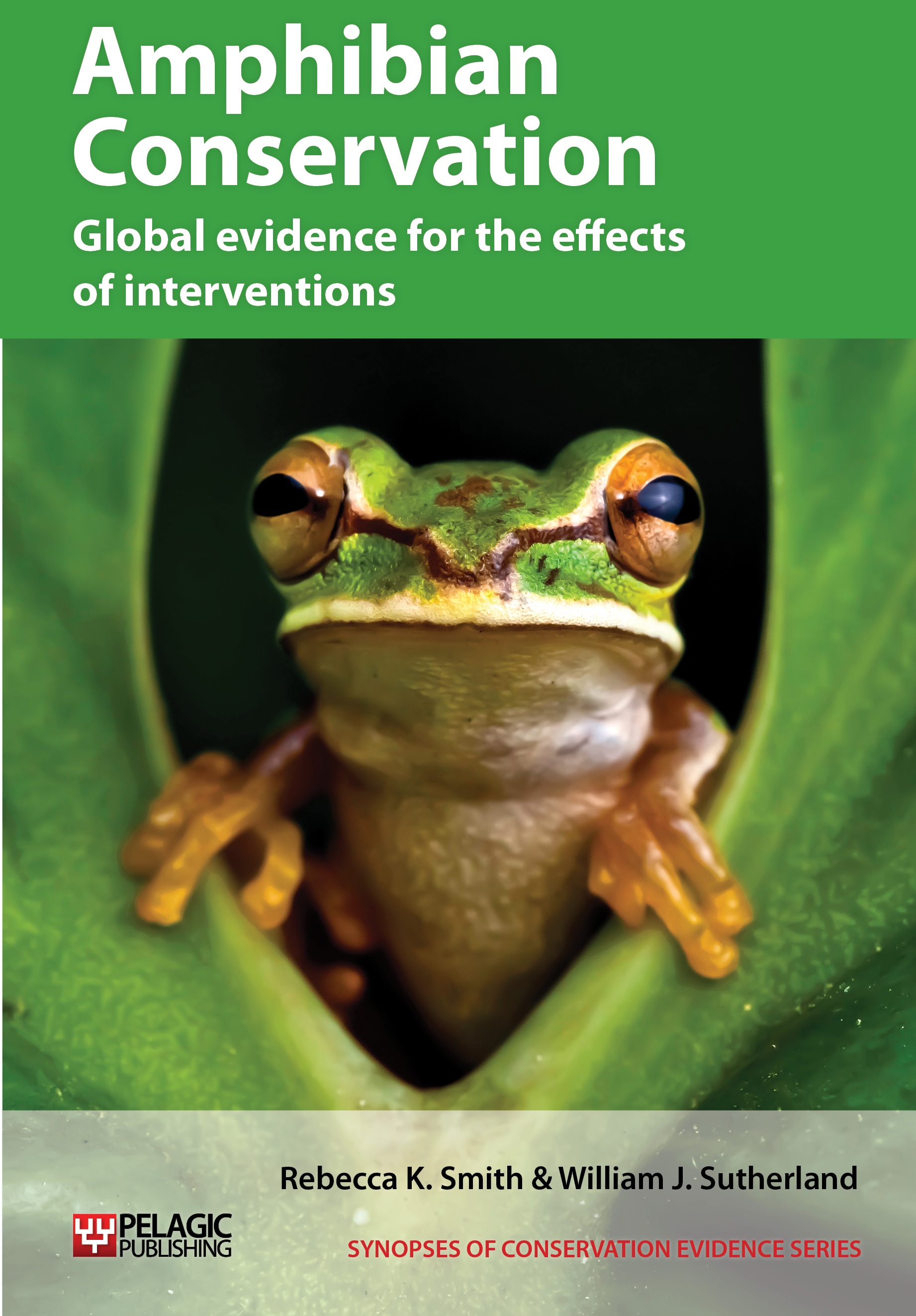Regulate water levels
-
Overall effectiveness category Beneficial
-
Number of studies: 5
View assessment score
Hide assessment score
How is the evidence assessed?
-
Effectiveness
70% -
Certainty
65% -
Harms
10%
Study locations
Supporting evidence from individual studies
A before-and-after study in 1986–1995 of a pond within a housing development near Peterborough, England, UK (Cooke 1997) found that deepening the pond and regulating water levels maintained great crested newt Triturus cristatus and smooth newt Triturus vulgaris populations. Before the development, numbers varied for great crested newts (1–9) and smooth newts (1–2). Adults of both species returned to breed in 1989–1995 following the development (crested: 10–20; smooth: 9–57). However, production of metamorphs failed in 1990 due to pond drying. Larval catches increased in 1991 following maintenance of water levels (crested: 62; smooth: 22), but then decreased (crested: 15 to 0; smooth: 27 to 2). Development was undertaken in 1987–1989. The pond (800 m2) was deepened in 1988 and water pumped to the pond from 1991. A 1 ha area was retained around the pond. Newts were counted by torch and larvae netted once or twice in 1986–1987 and 3–4 times in March–May 1988–1995.
Study and other actions testedA replicated, controlled study of 12 created ponds in forest in South Carolina, USA (Fauth 2002) found that draining ponds resulted in a significant increase in amphibian abundance and species richness. Species richness increased 50% in created wildlife ponds and 100% in construction ponds, compared to those left undrained. Draining in summer resulted in larger increases than draining in winter. Amphibian abundance was also significantly higher in drained ponds compared to those undrained. Created wildlife ponds and ponds created following removal of construction material were drained in summer, winter, both or never. Each treatment was replicated three times.
Study and other actions testedA before-and-after study in 2001 of a pond in southern Mississippi, USA (Seigel, Dinsmore & Richter 2006) found that maintaining the water level to stop the pond drying resulted in the first successful breeding by dusky gopher frog Rana sevosa for three years. Complete death of the larvae from the 36 egg masses laid in March was avoided as rather than drying by mid-May, water levels were successfully maintained until heavy rainfall in June. Metamorphs were produced for the first time since 1998, although at 130, numbers were lower than in 1997 (221) and 1998 (2,248). Over seven weeks from mid-April 2001, 366,000 litres of water was pumped from three nearby wells to stop the 440 m circumference pond drying. One of the wells was dug specifically, 50 m from the pond. Irrigation hoses and tanker trucks were used to bring in water.
Study and other actions testedA replicated, controlled study in 2005–2006 of rice fields in southern Brazil (Machado & Maltchik 2010) found that keeping fields flooded after harvest did not result in increased amphibian species richness or abundance, but did change species composition. Mean species richness and abundance did not differ between flooded and drained fields (species: 2–8; abundance: 3–66). However, species composition did differ between flooded and dry fields, and a natural wetland. Mean species richness and abundance was lower in flooded and drained fields than the natural wetland (species: 5–8; abundance: 54–139). Abundance at all sites was higher in the growing seasons. Amphibians were monitored in six randomly selected rice fields (1 ha), three that were kept flooded after harvest and three that were drained dry. Three surveys were undertaken in a natural wetland (10 km2). Each field was surveyed six times at night using six random 15 minute visual transects in June 2005 to June 2006.
Study and other actions testedA replicated, site comparison study in 1985–2006 of 20 sites in the UK (McGrath & Lorenzen 2010) found that natterjack toad Bufo calamita populations increased with species specific habitat management including maintenance of water levels. In contrast, long-term trends showed population declines at unmanaged sites. Individual types of habitat management (aquatic, terrestrial or common toad Bufo bufo management) did not significantly affect trends, but length of management did. Overall, five of the 20 sites showed positive population trends, five showed negative trends and 10 trends did not differ significantly from zero. Data on populations (egg string counts) and management activities over 11–21 years were obtained from the Natterjack Toad Site Register. Habitat management for toads was undertaken at seven sites. Management varied between sites, but included maintaining water levels, pond creation, adding lime to acidic ponds, vegetation clearance and implementing grazing schemes. Translocations were also undertaken at seven of the 20 sites using wild-sourced (including head-starting) or captive-bred toads.
Study and other actions tested
Where has this evidence come from?
List of journals searched by synopsis
All the journals searched for all synopses
This Action forms part of the Action Synopsis:
Amphibian Conservation
Amphibian Conservation - Published 2014
Amphibian Synopsis





)_2023.JPG)














